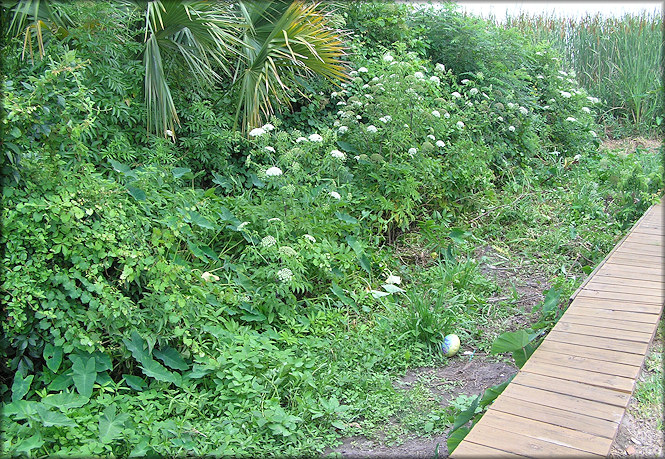|
Daedalochila auriculata (Say, 1818) Ocala Liptooth At Green Cove Springs |
|
|
Clay County, Florida |
|
|
Over the past
few years a small but enthusiastic group of land snail
collectors have been engaged in locating populations of the elusive
Daedalochila auriculata in northeast Florida. A population is
typically located by perusing likely looking habitat and searching
for empty and usually bleached shells. However, the group soon
learned that locating an area where the species lives (or has lived)
using this method and actually find a living specimen are two
different things. On December 1, 2007 Dr. Harry Lee of Jacksonville was returning from a collecting trip to central Florida and stopped at the Governor's Creek boat ramp at the northern end of Green Cove Springs, Florida to make a final search before arriving back in Jacksonville. The boat ramp is a Clay County public facility immediately adjacent to busy route US17 (GPS: 3000.277N 08141.320W - WGS-84 Datum). As luck would have it, Harry located about two dozen empty Daedalochila auriculata shells in vegetation between the bulkhead and the nearby St. Johns River (see image below). Over the next six months additional visits were made to this station by Harry, this reporter, and Dr. Henry McCullagh. During each visit empty shells were rather common, but no living specimens could be found despite the fact that the colony appeared to be restricted to a narrow zone less than 30 feet in length. After personally thoroughly searching the habitat on half a dozen occasions and still not locating any living specimens, it was decided that the living specimens, if there were any remaining, were in an inaccessible very heavily vegetated area closer to the river - an area not searched previously. Armed with a machete and a heavy duty garden rake, work was begun clearing some of the vegetation which stood some 15 feet high. Finally on 6/20/2008, two living adult specimens were found and subsequently preserved for anatomical and molecular genetic study. Ultimately, after considerable work over the next month, an additional six living specimens were found. A return visit was made to the site on September 12, 2008 - almost a month after the passing of Tropical Storm Fay resulted in a respectable rise in the nearby St. Johns River which ultimately inundated the Daedalochila habitat with brackish water. No live Daedalochila could be found. However, 58 empty shells were found in the high water wrack line some 25 feet distant from the normal river high water mark. The large number of empty shells found, as well as their location, suggests that the Daedalochila colony is more widely dispersed than what was initially believed. |
|
|
Daedalochila habitat on 6/17/2008 prior to the vegetation clearing project |
|
|
|
|
